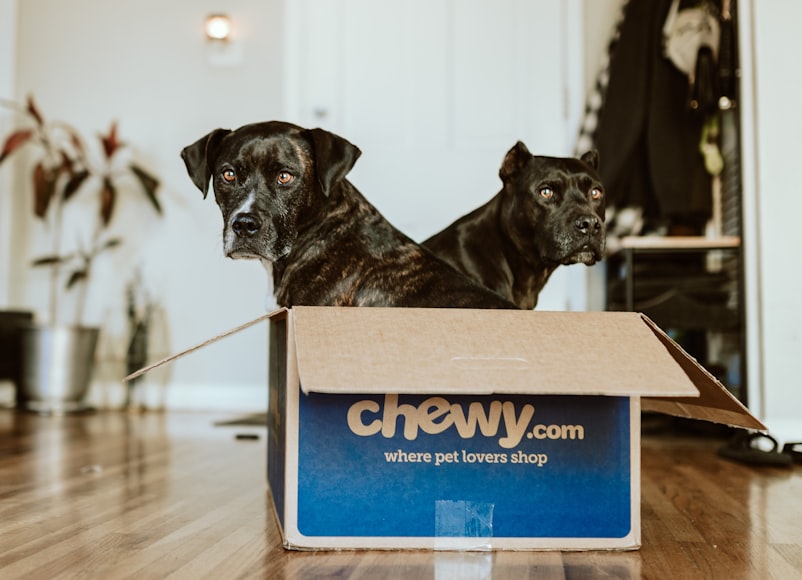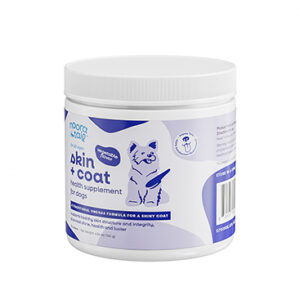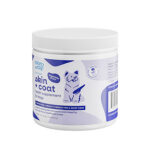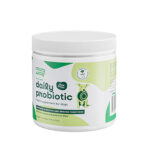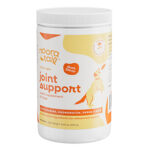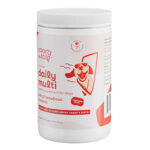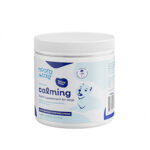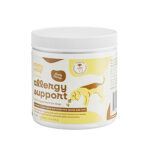Outline: Managing Hot Spots on Dogs

Hot spots, also known as acute moist dermatitis, are painful skin infections that can develop on dogs of all ages and breeds. These unsightly lesions are characterized by reddened, weeping, and often foul-smelling skin. If left untreated, hot spots can quickly become serious and threaten your dog’s health and well-being. Here’s a comprehensive guide to help you manage hot spots on your furry companion:
Identifying Hot Spots
The first step in managing hot spots is to recognize the symptoms. Check your dog’s skin for:
- Redness, swelling, and warmth
- Weeping or oozing fluid
- Matted or crusty fur
- Foul odor
- Itching or scratching
Hot spots typically appear on areas of the body where there is friction or moisture, such as the face, ears, armpits, and groin.
Causes of Hot Spots
There are several factors that can contribute to the development of hot spots in dogs, including:
- Allergies
- Skin irritants (fleas, ticks, chemicals)
- Parasites
- Skin injuries
- Excessive moisture
- Hormonal imbalances
Treatment Options
Once you have identified a hot spot on your dog, you should seek veterinary attention as soon as possible. The veterinarian will examine your dog’s skin, determine the underlying cause, and recommend appropriate treatment options. These may include:
1. Topical Treatment:
* Antibiotics to kill bacteria
* Anti-inflammatory medications to reduce swelling
* Antifungal medications if yeast is present
2. Oral Medications:
* Antibiotics to combat bacterial infections
* Antihistamines to relieve itching and inflammation
3. Wound Management:
* Clipping away matted fur around the hot spot
* Cleaning the area with a mild antiseptic
* Applying a protective bandage or cone to prevent scratching
4. Addressing the Underlying Cause:
* If allergies are the cause, identifying and avoiding allergens
* Treating skin parasites or infections
* Controlling excessive moisture by using absorbent bedding or wiping down the dog after exercise
Home Care
In addition to veterinary treatment, there are several home care measures you can take to support your dog’s recovery:
- Keep the affected area clean and dry.
- Apply cold compresses to reduce inflammation.
- Use soothing shampoos and conditioners specifically designed for dogs with skin conditions.
- Avoid overbathing, as this can worsen dryness and irritation.
- Limit your dog’s activity to prevent excessive licking or scratching.
- Provide a comfortable, stress-free environment.
Prevention
Preventing hot spots is the best way to protect your dog’s health and well-being. Here are a few tips:
- Keep your dog clean and well-groomed.
- Regularly check for parasites and treat any infections promptly.
- Avoid exposing your dog to chemical irritants.
- Manage your dog’s allergies.
- Control excessive moisture by drying your dog thoroughly after baths or swims.
- Provide a healthy diet to support your dog’s immune system.
Remember, hot spots can be a serious health concern. If you notice any signs of skin irritation on your dog, seek veterinary attention promptly. Early diagnosis and treatment can help minimize discomfort, prevent complications, and restore your furry friend’s skin health.
Identify and Isolate the Affected Area:

Hot spots, also known as moist dermatitis or acute moist pyotraumatic dermatitis, are a common skin condition in dogs that can be extremely uncomfortable and painful. They typically appear as red, inflamed, moist patches of skin that can become oozing and infected if not treated promptly. Hot spots can occur anywhere on the dog’s body, but they are most often found in areas that are prone to moisture and friction, such as the ears, paws, and underbelly.
Causes of Hot Spots on Dogs:
Hot spots can be caused by a variety of factors, including:
- Allergies: Food allergies, environmental allergies, and flea allergies can all lead to hot spots.
- Skin irritation: Hot spots can be caused by skin irritation from flea bites, insect stings, or contact with abrasive materials.
- Trauma: Skin injuries, such as scratches or bites, can create a moist environment that is ideal for the growth of bacteria.
- Bacterial infection: Bacteria, such as Staphylococcus aureus, can thrive in the warm, moist environment of a hot spot and cause an infection.
- Yeast infection: Yeast, such as Malassezia pachydermatis, can also cause hot spots, especially in dogs with allergies or weakened immune systems.
Identifying and Isolating Hot Spots:
If you suspect that your dog has a hot spot, it is important to identify and isolate the affected area promptly. Here are some steps you can follow:
- Examine the dog’s skin for inflamed, moist, or oozing patches.
- Separate the dog from other animals and objects to prevent further irritation.
- Trim the hair around the affected area to keep it clean and dry.
- Clean the area with a mild antiseptic solution or dog-safe shampoo.
- Apply a cool compress to the area to reduce inflammation.
Treating Hot Spots on Dogs:
The treatment for hot spots will depend on the underlying cause and the severity of the infection. In most cases, treatment will involve a combination of topical and oral medications.
- Topical treatments: Topical treatments can include antibiotics, antifungals, and anti-inflammatories. These medications can be applied directly to the affected area to kill bacteria, yeast, and reduce inflammation.
- Oral medications: Oral antibiotics may be prescribed if the infection is severe or if it has spread to other areas of the body.
- Other treatments: In some cases, other treatments may be necessary, such as pain relievers, anti-anxiety medications, and dietary changes.
Preventing Hot Spots on Dogs:
The best way to prevent hot spots on dogs is to address the underlying causes. Here are some tips:
- Control allergies: Identify and avoid allergens that trigger your dog’s allergies.
- Prevent skin irritation: Keep your dog away from irritating substances, such as chemicals, abrasive materials, and insect bites.
- Groom your dog regularly: Regular grooming will help to keep your dog’s skin clean and dry, which can help to prevent hot spots.
- Treat skin injuries promptly: If your dog has a skin injury, clean and disinfect it promptly to prevent infection.
- Boost your dog’s immune system: A healthy immune system can help to prevent bacterial and yeast infections. Feed your dog a healthy diet and provide regular exercise.
If your dog develops a hot spot, it is important to seek veterinary attention promptly. Hot spots can be uncomfortable and painful, and they can also become infected if not treated properly. By following these tips, you can help to prevent hot spots on your dog and keep their skin healthy and comfortable.
Clip the Hair Around the Hot Spot:

Hot spots, also known as acute moist dermatitis, are common skin infections in dogs that can cause significant discomfort. They typically manifest as red, inflamed, and oozing patches on the skin. While hot spots can develop anywhere on the body, they are most frequently found in areas such as the face, ears, armpits, and groin.
Causes of Hot Spots
Hot spots often result from a combination of factors, including:
- Skin irritation: Allergies, insect bites, or other irritants can trigger an inflammatory response that leads to hot spots.
- Moisture: A warm, humid environment creates an ideal breeding ground for bacteria.
- Grooming: Poor grooming practices, such as infrequent bathing or brushing, can contribute to skin irritation and infection.
- Stress: Stress can weaken the immune system, making dogs more susceptible to infections.
Symptoms of Hot Spots
Hot spots are characterized by the following symptoms:
- Red, inflamed skin patches
- Open sores or oozing
- Hair loss
- Excessive licking or scratching
- Pain and discomfort
Diagnosis of Hot Spots
Diagnosing hot spots is typically straightforward, based on the physical examination findings. However, your veterinarian may recommend additional tests, such as skin scrapings or cultures, to rule out other underlying conditions.
Treatment of Hot Spots
Treatment for hot spots involves addressing the underlying cause and alleviating the symptoms. Common treatment options include:
- Clipping the Hair: Clipping the hair around the affected area exposes the skin for easier treatment.
- Cleaning and Disinfecting: The hot spot should be gently cleaned with a mild antiseptic solution to remove debris and bacteria.
- Antibiotics: Oral or topical antibiotics may be prescribed to combat bacterial infections.
- Anti-Inflammatory Medication: Non-steroidal anti-inflammatory drugs (NSAIDs) may be administered to reduce inflammation and pain.
- Topical Medications: Ointments or sprays containing antibiotics, antifungals, or corticosteroids may be applied to the affected area to reduce inflammation and itching.
- Elizabethan Collar: An Elizabethan collar, or cone, may be used to prevent the dog from licking or scratching the hot spot, which can delay healing.
Prevention of Hot Spots
Preventing hot spots is crucial to maintaining your dog’s skin health. Here are some tips:
- Regular Grooming: Brush your dog’s coat regularly to remove loose hair and debris. Bathe your dog as often as recommended for their breed.
- Control Allergies: Identify and avoid allergens that may trigger skin irritation.
- Use Insect Repellent: Use insect repellent to prevent insect bites.
- Reduce Stress: Provide your dog with a stress-free environment.
- Inspect the Skin: Regularly inspect your dog’s skin for any signs of irritation or infection.
Conclusion
Hot spots are common skin infections in dogs that can cause significant discomfort. By understanding the causes, symptoms, and treatment options, you can help your dog recover quickly and prevent future flare-ups. Regular grooming, controlling allergies, and reducing stress are essential for maintaining a healthy and happy pup. If you suspect your dog has a hot spot, do not hesitate to consult with your veterinarian promptly for proper diagnosis and treatment.
Cleanse the Wound:

Hot spots, scientifically known as acute moist dermatitis, are painful skin lesions that can rapidly develop on dogs. These inflamed areas appear as red, moist, and oozing patches, often causing intense itching and discomfort. Understanding the causes, symptoms, and proper treatment of hot spots is crucial for pet owners to ensure their canine companions’ well-being.
Causes of Hot Spots:
Hot spots can be triggered by various underlying factors, including:
- Skin irritation: Flea or tick bites, environmental allergies, or friction from tight collars can cause skin irritation, leading to hot spots.
- Bacteria: Hot spots are commonly caused by bacterial infections, particularly Staphylococcus pseudintermedius, which thrives in moist, warm environments.
- Parasites: Mange mites or other parasites can burrow into the skin, causing intense itching and secondary infections.
- Allergies: Atopic dermatitis, or environmental allergies, can result in itchy, inflamed skin, making dogs more susceptible to hot spots.
- Moisture: Damp or wet environments, such as rainy weather or prolonged contact with wet grass, can contribute to hot spot formation.
Symptoms of Hot Spots:
Hot spots manifest as distinct symptoms, including:
- Red, inflamed skin: The affected area appears red and swollen.
- Moist, oozing discharge: The hot spot may weep clear or yellow fluid.
- Itching: Hot spots are extremely itchy, causing dogs to lick, bite, or scratch the area vigorously.
- Pain: The inflamed skin can be sensitive and painful to the touch.
- Hair loss: Severe scratching or licking can lead to hair loss in the affected area.
Treatment for Hot Spots:
Treating hot spots promptly is essential to prevent further infection and discomfort. The following steps should be followed:
- Cleanse the Wound:
- Use a mild antiseptic solution or gentle soap and water to remove any debris or discharge.
-
Rinse the area thoroughly and pat it dry.
-
Antibiotics:
- Bacterial infections should be treated with antibiotics prescribed by a veterinarian.
-
Oral or topical antibiotics may be required depending on the severity of the infection.
-
Anti-Inflammatory Medications:
- Non-steroidal anti-inflammatory drugs (NSAIDs) can help reduce inflammation and pain.
-
Corticosteroids, such as prednisone, may also be prescribed for short-term relief.
-
Antihistamines:
-
If allergies are suspected, antihistamines can be used to block histamine receptors and reduce itching.
-
Elizabethan Collar:
-
An Elizabethan collar, also known as a cone, prevents dogs from licking or biting the hot spot, allowing it to heal undisturbed.
-
Shaving the Area:
- In cases of severe hot spots, shaving the hair around the affected area can improve ventilation and promote faster healing.
Prevention of Hot Spots:
Preventing hot spots in dogs involves addressing potential triggers and implementing proactive measures:
- Regular Grooming: Brush your dog regularly to remove loose hair, debris, and parasites.
- Flea and Tick Control: Use effective flea and tick preventatives to protect your dog from these parasites.
- Allergy Management: If your dog has allergies, identify and avoid potential allergens, such as certain foods or environmental triggers.
- Avoid Moisture: Keep your dog dry and minimize their exposure to wet environments that can contribute to hot spots.
- Stress Reduction: Stress can exacerbate skin conditions, so provide your dog with regular exercise and a stress-free environment.
Hot spots on dogs can be managed effectively with prompt treatment and proper care. If you notice any signs of a hot spot on your dog, it is crucial to consult a veterinarian for diagnosis and appropriate medication. Following preventive measures can help reduce the risk of future hot spot occurrences, ensuring your dog’s comfort and well-being.
Apply a Topical Medication:

Hot spots, also known as acute moist dermatitis, are common skin infections in dogs that can cause intense discomfort and irritation. These painful lesions can appear suddenly, often as a result of allergies, parasites, or skin injuries. If left untreated, hot spots can become severe and spread rapidly, potentially leading to more serious health issues.
Signs and Symptoms of Hot Spots
- Red, moist, and inflamed skin
- Hair loss around the affected area
- Oozing or crusted lesions
- Intense itching and discomfort
- Lesions that grow and spread quickly
Causes of Hot Spots
Hot spots can be caused by a variety of factors, including:
- Allergies: Insect bites, environmental allergens, and food sensitivities can trigger hot spots.
- Parasites: Fleas, ticks, and mites can irritate the skin and cause lesions.
- Skin injuries: Cuts, scrapes, or bites can create open wounds that become infected.
- Grooming: Inadequate grooming can lead to tangles and mats that trap moisture and create a breeding ground for bacteria.
- Moisture entrapment: Hot and humid environments, such as folds in the skin or under matted fur, can promote the growth of bacteria and yeast.
Diagnosing Hot Spots
Diagnosing hot spots typically involves a physical examination by a veterinarian. The veterinarian will assess the appearance, location, and severity of the lesions. They may also recommend diagnostic tests, such as skin scraping or cytology, to rule out underlying medical conditions.
Treatment Options for Hot Spots
The treatment of hot spots depends on the underlying cause and the severity of the infection. Common treatment options include:
-
Clipping and Cleaning: The affected area should be clipped to remove any matted fur and allow air to circulate. The area should then be gently cleaned with a mild antiseptic solution.
-
Topical Medication: The veterinarian may prescribe antibiotic or antifungal ointments or creams to apply directly to the lesions. These medications help fight infection and soothe inflammation.
-
Oral Antibiotics: In severe cases, oral antibiotics may be prescribed to combat systemic infection.
-
Anti-Inflammatory Medications: Nonsteroidal anti-inflammatory drugs (NSAIDs) or steroids can be given to reduce pain and swelling.
-
Elizabethan Collar: An Elizabethan collar, also known as a cone, can prevent the dog from licking or scratching the lesions, allowing them to heal properly.
-
Underlying Cause Treatment: If the hot spot is caused by an underlying issue, such as allergies or parasites, the veterinarian will recommend appropriate treatment to address the root cause.
Prevention of Hot Spots
Preventing hot spots is essential for maintaining your dog’s skin health. Here are some preventive measures:
- Regular Grooming: Brush your dog regularly to remove loose hair and prevent mats.
- Flea and Tick Control: Use monthly flea and tick prevention to protect your dog from these parasites.
- Allergy Management: Identify and avoid potential allergens that may trigger hot spots in your dog.
- Keep the Environment Clean: Remove any potential sources of moisture or irritation from your dog’s environment.
- Monitor Your Dog: Pay attention to any changes in your dog’s skin or behavior. Prompt treatment of minor skin irritations can prevent them from developing into hot spots.
Conclusion
Hot spots are a common skin problem in dogs that can cause significant discomfort and require prompt veterinary attention. By understanding the signs, causes, and treatment options for hot spots, you can help your dog recover and maintain healthy skin. Remember to consult with your veterinarian for an accurate diagnosis and personalized treatment plan to ensure the best outcome for your furry companion.
Cover the Hot Spot (optional):
As a dog owner, it’s essential to be aware of potential health issues that can affect your furry friend, including hot spots. Hot spots, also known as moist dermatitis or acute moist pyoderma, are common skin infections that can cause significant discomfort and irritation. Understanding the causes, symptoms, and treatment options for hot spots is crucial for ensuring the well-being of your canine companion.
Causes of Hot Spots
Hot spots can develop due to various underlying factors, including:
- Skin irritation: Fleas, ticks, allergies, and skin injuries can trigger intense itching and scratching, leading to broken skin and infection.
- Yeast or bacterial infections: Moisture trapped in skin folds or under mats can create a breeding ground for yeast and bacteria, leading to hot spots.
- Immune disorders: Conditions that weaken the immune system can increase a dog’s susceptibility to hot spots.
- Stress: Chronic stress can suppress the immune system, making dogs more susceptible to skin infections.
Symptoms of Hot Spots
The primary symptom of a hot spot is a moist, red, and painful area on your dog’s skin. Other signs may include:
- Intense itching and scratching
- Scabs or crusts
- Hair loss
- Foul odor
- Lethargy
Treatment for Hot Spots
Prompt treatment is essential to alleviate your dog’s discomfort and prevent the infection from spreading. Treatment options for hot spots may include:
- Clipping and cleaning the affected area: Removing the hair around the hot spot improves airflow and facilitates cleaning. Gently clean the area with a mild antiseptic solution or prescribed shampoo.
- Antibiotics: Oral or topical antibiotics may be prescribed to treat bacterial infections.
- Antifungals: If a yeast infection is present, your veterinarian may prescribe antifungal medications.
- Pain relievers: Non-steroidal anti-inflammatory drugs (NSAIDs) can help reduce pain and inflammation.
- Steroids: In severe cases, your veterinarian may prescribe steroids to suppress the immune system and reduce inflammation.
Covering the Hot Spot (optional):
Covering the affected area with a breathable bandage or gauze can help protect it from further irritation and promote healing. Ensure the bandage is not too tight and allows for proper airflow.
Prevention of Hot Spots
Preventing hot spots is crucial for the overall health and well-being of your dog. Here are some proactive measures you can take:
- Regular grooming: Brush your dog’s fur regularly to remove loose hair and prevent mats.
- Flea and tick control: Regularly treat your dog for fleas and ticks using effective products.
- Manage allergies: If your dog has allergies, consult your veterinarian to identify and manage potential allergens.
- Keep your dog clean and dry: Avoid bathing your dog too frequently, but keep them clean and dry. Ensure their bedding is clean and provides adequate ventilation.
- Reduce stress: Provide your dog with plenty of enrichment activities and ensure they have a calm and stress-free environment.
Conclusion
Hot spots are common skin infections that can cause significant discomfort to your dog. Understanding the causes, symptoms, and treatment options for hot spots is essential for effective management. Prompt treatment and preventive measures can help alleviate your dog’s suffering and maintain their overall health and well-being. If you suspect your dog has a hot spot, it’s crucial to consult your veterinarian for proper diagnosis and treatment.
Prevent Licking and Scratching:
Hot spots, also known as acute moist dermatitis, are common skin infections that affect dogs. They appear as red, inflamed, weeping areas of skin that can be extremely itchy and painful. If left untreated, hot spots can quickly become infected and spread.
Causes of Hot Spots
Hot spots can be caused by various factors, including:
- Allergies (e.g., flea bites, food allergies)
- Skin irritants (e.g., parasites, bacteria, fungi)
- Excessive licking or scratching due to underlying health conditions or anxiety
- Trauma or injury
Symptoms of Hot Spots
The most common symptom of a hot spot is a red, inflamed area of skin that is painful to the touch and often weeps or bleeds. Other symptoms may include:
- Itching
- Scratching
- Licking
- Chewing
- Hair loss
- Swelling
Preventing Hot Spots
Prevention is key in managing hot spots. Here are some measures you can take:
- Control allergies: Manage flea infestations and identify and avoid food allergens.
- Minimize skin irritants: Regularly groom your dog to remove dirt and debris, and use mild shampoos and conditioners.
- Prevent excessive licking and scratching: Address any underlying health conditions or anxiety that may trigger licking or scratching.
- Protect from trauma: Keep your dog away from sharp objects or potential hazards.
Treating Hot Spots
If your dog develops a hot spot, prompt treatment is crucial to prevent infection and further spread:
1. Veterinary Care
Schedule an appointment with your veterinarian for proper diagnosis and treatment. They may prescribe antibiotics, antifungals, or corticosteroids to combat infection and inflammation.
2. Prevent Licking and Scratching
It’s essential to prevent your dog from licking or scratching the hot spot, as this can worsen the inflammation and spread the infection. Consider using:
- Elizabethan collar (cone): This cone-shaped device prevents your dog from reaching the affected area.
- Bitter spray: Apply a bitter-tasting spray to the hot spot to deter licking.
3. Keep the Wound Clean
- Gently clean the hot spot: Use a warm, wet cloth or cotton ball to gently clean the area. Avoid using harsh soaps or scrubbing, as this can irritate the skin further.
- Apply a disinfectant: Your veterinarian may recommend a topical disinfectant to kill bacteria and prevent infection.
4. Manage Inflammation
- Cold compress: Apply a cold compress to the hot spot for short periods to reduce inflammation and swelling.
- Anti-inflammatory medication: Your veterinarian may prescribe anti-inflammatory medication to reduce discomfort and inflammation.
5. Provide Comfort
- Keep your dog comfortable: Provide a clean, comfortable bed and plenty of fresh water.
- Minimize stress: Try to keep your dog calm and relaxed, as stress can exacerbate hot spots.
6. Monitor and Reassess
- Monitor improvement: Check the hot spot daily for signs of improvement or worsening.
- Reassess with veterinarian: If the hot spot does not respond to treatment within a few days, consult your veterinarian for further evaluation.
When to Seek Veterinary Care
Hot spots can be serious if not treated promptly. If your dog exhibits severe symptoms such as:
- Difficulty breathing
- Lethargy
- Loss of appetite
- Fever
- Swelling that spreads rapidly
Seek immediate veterinary attention, as these symptoms may indicate a more serious underlying condition.
Monitor the Hot Spot’s Progress:
Hot spots, also known as moist dermatitis or acute moist pyoderma, are a common skin condition that can affect dogs. These red, inflamed lesions often appear as moist, oozing patches of skin and can cause intense discomfort to the animal.
Causes of Hot Spots on Dogs
Hot spots can arise due to various factors, including:
- Allergic reactions (e.g., flea bites, food allergies)
- Insect bites
- Fungal or bacterial infections
- Skin irritations (e.g., rubbing against carpets or furniture)
- Stress or anxiety
- Underlying medical conditions (e.g., skin allergies, hormonal imbalances)
Signs and Symptoms of Hot Spots
Identifying hot spots on dogs is crucial for timely treatment. Common signs and symptoms include:
- Red, inflamed skin
- Moist, oozing lesions
- Itching and scratching
- Hair loss
- Pain and discomfort
Importance of Veterinary Care
While hot spots can often be treated at home, it is essential to consult with a veterinarian for proper diagnosis and treatment. This is especially important if the hot spot:
- Does not improve within a few days of home care
- Is large or deep
- Shows signs of infection, such as swelling, pus, or fever
- Causes severe discomfort or pain
Home Treatment for Hot Spots
In mild cases, hot spots can be managed at home with the following steps:
- Keep the Area Clean: Clean the hot spot with a mild antiseptic solution and a soft cloth. Avoid using harsh soaps or detergents.
- Apply a Topical Antibiotic: Apply an over-the-counter topical antibiotic cream or ointment as directed by your veterinarian.
- Use Cold Compresses: Apply a cold compress to the hot spot to reduce inflammation and itching.
- Prevent Scratching: Cover the hot spot with a protective bandage or cone collar to prevent the dog from scratching and irritating the area further.
- Monitor the Hot Spot’s Progress: Check the hot spot regularly for signs of improvement or worsening. Contact your veterinarian if the condition does not resolve or if the dog shows any signs of discomfort.
Preventing Hot Spots
Preventing hot spots is essential to maintaining a dog’s skin health. Here are some preventive measures:
- Control Parasites: Keep your dog protected against fleas, ticks, and other external parasites.
- Manage Allergies: Identify and avoid allergens that trigger skin reactions.
- Provide a Stress-Free Environment: Minimize stressors that can contribute to hot spot flare-ups.
- Maintain Proper Hygiene: Groom your dog regularly and bathe them as needed.
- Address Underlying Conditions: Manage any underlying medical conditions that may predispose your dog to skin issues.
Tips for Managing Hot Spots in Dogs
- Avoid excessive bathing or using harsh cleansers, as this can irritate the skin further.
- If the hot spot is deep or extensive, your veterinarian may prescribe antibiotics or antifungal medications.
- Do not apply human medications to your dog’s hot spot without consulting a veterinarian.
- Keep the dog’s environment clean and free of allergens.
- Monitor the dog’s diet and avoid foods that may trigger allergic reactions.
- Provide plenty of fresh water and encourage the dog to rest in a cool, shaded area.
Remember, hot spots on dogs can be uncomfortable and distressing. By recognizing the signs, implementing proper home care, and seeking veterinary assistance when necessary, you can effectively manage this common skin condition and ensure your furry companion’s skin health and well-being.
Address Underlying Causes:
Hot spots, also known as acute moist dermatitis, are uncomfortable and painful skin lesions that can affect dogs of all breeds and ages. These lesions are characterized by their red, moist, and oozing appearance, often accompanied by intense itching and irritation. Understanding the underlying causes and implementing effective treatment strategies is crucial for managing hot spots and ensuring the well-being of your canine companion.
Causes of Hot Spots
Hot spots are triggered by a combination of factors that damage the skin’s barrier, allowing moisture and bacteria to accumulate and thrive. Common causes include:
- Skin allergies: Allergens such as pollen, dust mites, and food ingredients can cause allergic reactions that lead to inflammation and skin irritation, setting the stage for a hot spot.
- Skin infections: Bacterial or fungal infections can invade broken skin or weakened skin defenses, causing localized inflammation and infection.
- Skin injuries: Abrasions, cuts, or bites can create an entry point for bacteria and moisture, leading to the development of a hot spot.
- Excessive moisture: Dogs with thick coats or those living in humid environments are more susceptible to hot spots, as moisture can trap bacteria on the skin and create an ideal environment for their growth.
- Stress and anxiety: Stress can trigger hormonal changes that affect the skin’s immune function, making dogs more vulnerable to skin problems.
Treatment of Hot Spots
Effective treatment of hot spots involves addressing the underlying causes and providing immediate relief from discomfort. Here’s a step-by-step guide:
1. Veterinary Consultation:
- Consult with your veterinarian to determine the underlying cause of the hot spot and rule out any serious medical conditions.
- Antibiotics may be prescribed to treat bacterial infections, while antifungals may be recommended for fungal infections.
- Allergy testing may be necessary to identify and eliminate allergens that are triggering allergic reactions.
2. Skin Care:
- Clip the hair around the hot spot to allow for proper ventilation and easier cleaning.
- Clean the area gently with a mild antiseptic solution or diluted hydrogen peroxide.
- Apply a cool, wet compress to reduce inflammation and discomfort.
- Use a topical cream or ointment prescribed by your veterinarian to soothe the skin and promote healing.
3. Address Underlying Causes:
- Manage allergies by avoiding triggers, using hypoallergenic products, and considering allergy shots.
- Treat skin infections promptly to prevent their spread and severity.
- Protect your dog from injuries by providing safe environments and using protective gear when necessary.
- Manage stress levels through exercise, mental stimulation, and a calming home environment.
4. Prevention:
- Regular bathing and grooming help remove dirt, allergens, and bacteria from your dog’s skin.
- Keep the environment clean and free of potential irritants.
- Use a spray or ointment that contains aloe vera or lavender to soothe and protect the skin.
- Consult with your veterinarian about supplements that can boost your dog’s immune system and skin health.
Conclusion
Hot spots can be uncomfortable and distressing for dogs, but with prompt treatment and preventive measures, they can be effectively managed. By addressing the underlying causes, providing immediate relief, and implementing ongoing skincare practices, you can ensure the health and well-being of your canine companion and prevent future hot spot outbreaks. Remember to consult with your veterinarian for personalized guidance and professional care.








